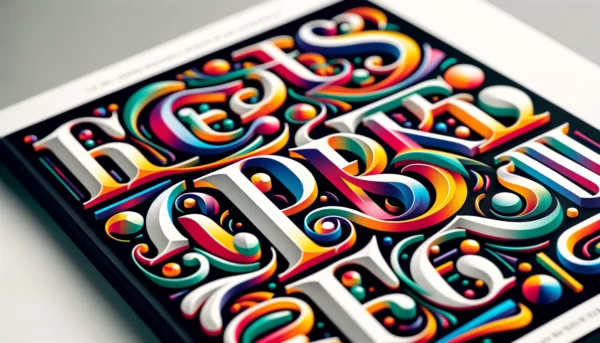In the vibrant world of publishing, where books clamor for attention like stars in the night sky, the cover of a book isn’t just a pretty face—it’s the secret handshake that invites readers into a new universe. As we step into 2025, book cover design has transcended mere aesthetics, morphing into a storytelling powerhouse that mirrors the fusion of art and marketing savvy.
This year, prepare to be captivated by bold typography and animated covers, eco-conscious designs that reflect a commitment to sustainability, and minimalistic masterpieces that employ clever uses of negative space to intrigue the intellectual palate. Alongside, the resurgence of retro-inspired themes provides a nostalgic nod to vibrant eras past, blending historical cues with modern design sensibilities. Each cover is not only a visual treat but a strategic tool designed to make a book stand out in a crowded marketplace.
As we dive into the vibrant world of book covers in 2025, we’re witnessing a blend of nostalgia and innovation that’s turning the page on traditional designs. With readers judging books more and more by their covers, designers are pulling out all the stops, ensuring every book not only stands out on the shelf but also captures hearts and imaginations across genres. Let’s explore some of the year’s most eye-catching trends, where art meets wit in the library of contemporary literature.
Book Cover Trends in 2025
In 2025, the landscape of book cover design artfully marries nostalgia with modern innovation, engaging both lovers of the classic and seekers of the new. This year, as designers revisit historical motifs with a contemporary twist, the resulting covers do more than just encase the pages—they draw readers into a visual journey, enhancing the narrative that lies within.

Minimalism: Less is More, More or Less
Example: Yellowface by R. F. Kuang & Crush by Ada Calhoun
The minimalist movement continues to dominate with its stark, uncluttered designs that communicate more with less. Using bold colors and ample whitespace, these covers offer a visual respite, proving that simplicity can indeed be profound. This approach not only highlights the main elements such as the title and author but also creates a strong, memorable impression that stands out in a digital-heavy world.

A Type of Boldness
Example: Lola In The Mirror by Trent Dalton & The Rival by Emma Lord
In this trend, typography is not just a tool but the main attraction. Bold, innovative fonts become expressive elements that convey the book’s tone and theme directly. This strategy is particularly effective for creating an instant emotional connection with potential readers, leveraging font styles and sizes to evoke everything from whimsy to dread.

Collage Core
Example: You’ll Never Believe Me by Kari Ferrell & Raised by a Serial Killer by April Balascio
Collage Core introduces a dynamic blend of old and new by layering photographs, textures, and text to create a deeply narrative-driven cover. This technique is particularly effective for memoirs and non-fiction, as it visually narrates personal histories and complex ideas through a tapestry of images. Each element is a clue to the content within, making the cover itself part of the storytelling process.

A Splash of Creativity
Example: Is a River Alive by Robert Macfarlane & The Vanishing Half by Brit Bennett
This trend discards traditional boundaries, combining audacious patterns with striking color palettes that demand attention and spark imagination. It’s designed to make each book stand out as a piece of art, enticing the reader’s curiosity and promising a vibrant, energetic narrative. Such covers are not just visually pleasing but also serve as conversation starters, enhancing the book’s appeal across various platforms.

The Shift to Illustrated Covers
Example: Summer Romance by Annabel Monaghan & The Wedding People by Alison Espach
Say goodbye to generic, boring stock photos and begin embracing unique, hand-drawn illustrations that infuse books with personality and intimacy. Each illustration is carefully crafted to reflect the book’s essence, offering a glimpse into the story’s world. This method enriches the reader’s visual and emotional experience, strengthening the bond between the story and its audience.

Shadows and Mysteries: Gothic is Back
Example: Queen of Carrion by Aiden Pierce and R K Pierce & The Dryad Storm by Laurie Forest
A resurgence in Gothic design brings back the allure of mystery and elegance to book covers. Dark hues and intricate, often haunting imagery are perfectly suited for narratives steeped in mystery or the supernatural. These covers evoke a sense of curiosity and foreboding, pulling readers into the story before they even turn the first page, making them perfect for gripping tales of intrigue and lore.
Current Book Cover Trends: A Quick Flip Through
As we turn the pages back to the early 2020s, it’s clear that the evolution of book cover design is not just a tale of changing aesthetics but a narrative woven through technological advancements and cultural shifts. Here’s how today’s top trends are rewriting the rulebook for book covers:
Digital Brushes and Beyond
No longer confined to high-budget projects, digital tools have democratized the design process. Today’s artists use these technologies to create covers that stand out in a sea of sameness, turning each cover into a personal statement. These vibrant and unique designs not only catch the eye but also resonate deeply with readers, reflecting the individuality of each story.
Eco-Friendly Innovations: Green Pages
Sustainability has painted the book industry green, influencing not just the content but the covers themselves. Modern covers incorporate recycled materials and eco-friendly inks, showcasing how environmental considerations can merge with aesthetic goals. This green revolution is more than a trend—it’s a reflection of global values, making each book a testament to responsible creativity.
Capturing Stories: Picture Perfect
In an era where every image can tell a story, book covers have elevated the role of photography from mere decoration to powerful narration. Photographic covers now serve as the first chapter of the book, setting the tone and inviting readers into the narrative world right from the first glance. This approach is particularly potent in non-fiction and mainstream fiction, where the authenticity and immediacy of photography can draw readers into the real-life relevance of the stories.
Going Viral: The #CoverLove Effect
Social media continues to reimagine the role of a book cover. In the age of Instagram and TikTok, a striking cover becomes a shareable gem, a piece of art that might just go viral and increase a book’s visibility exponentially. The phenomenon of “BookTok” has turned platforms like TikTok into a hotbed for book discovery, where visually appealing covers can lead to a book becoming a sensation overnight.
💡 Did You Know? In the past, book covers were purely functional, crafted to protect the pages rather than to attract readers. They lacked the artistic and marketing flair seen today, serving simply as practical shields for the written word.

Minimalism in Motion: Redefining Book Covers in 2025
In 2025, minimalist book cover design reflects a broader cultural embrace of modernism, simplicity, and elegance. This trend prioritizes the essentials—title, author, and a singular, compelling image—creating designs that resonate deeply in a cluttered world. Often using contrast to highlight the book cover elements. Here are three key reasons why minimalism is particularly effective:
1. Functionality Meets Elegance: Minimalist covers stand out for their functionality, especially in digital spaces where quick recognition is crucial. The use of bold titles against clean backgrounds ensures legibility and helps books pop in digital storefronts, appealing to readers who value content over intricate designs.
2. Cross-Genre Appeal: Minimalism has made significant inroads into genres traditionally known for elaborate covers, like fantasy and young adult. By employing subtle visual cues to suggest themes and settings, minimalist covers draw readers in, stimulating their imagination and enhancing the storytelling experience.
3. Eco-Conscious Design: Embracing sustainability, minimalist designs often feature biodegradable materials and soy-based inks, reflecting a commitment to environmental responsibility. This approach not only appeals to eco-conscious readers but also aligns the book’s physical design with its thematic content, particularly in titles that explore ecological topics.
💡 Did You Know? Haruki Murakami’s covers, often featuring solitary motifs and subdued color palettes, exemplify minimalist design. They not only capture the essence of his enigmatic storytelling but also make his books instantly recognizable—a testament to the power of a consistent and simple design strategy in building a strong author brand.

Typography: The Silent Storyteller on Every Cover
Typography on book covers is more than just arranging letters—it’s a form of silent communication that powerfully conveys the essence and tone of a book before a page is even turned. Here’s why this trend resonates deeply with readers:
Setting Expectations with Style
The choice between serif and sans-serif fonts does more than just define the book’s visual style; it sets the stage for the reader’s expectations. Serif fonts, with their traditional curves and feet, often adorn the covers of literary and historical genres, suggesting depth and a classical vibe.
Meanwhile, sans-serif fonts, known for their clean and straightforward appearance, bring a modern and approachable feel to genres such as science fiction and young adult. This subtle cue helps align the reader’s mindset with the narrative style and content they’re about to engage with.
Making Bold Statements with Scale
The growing trend of using large typography on book covers does more than catch the eye; it makes a bold statement. This oversized text not only serves as the cover’s focal point but also anchors the visual flow, guiding the reader’s attention through the cover’s elements in a strategic manner. Effective text hierarchy, achieved through variations in font size, weight, and contrast, clearly distinguishes the title, author’s name, and additional elements like taglines, enhancing both the cover’s aesthetics and its clarity.
Typography as a Tone Setter
The impact of typography extends into the emotional and psychological realms. Thriller novels might feature angular, disjointed typefaces to stir feelings of tension and discomfort, while romance titles opt for fluid, graceful scripts to evoke warmth and passion. These careful typographic choices subtly prepare the reader for the story’s mood and style, enriching the reading experience from the outset.
Your Publishing Journey Awaits – Start NowCover Story: How Design Influences Your Next Favorite Read
In an era where attention spans are short, the first impression a book cover makes is more critical than ever. Research indicates that a majority of readers make purchasing decisions within seconds. Modern covers leverage bold, eye-catching designs that align with the book’s theme, making the difference between a pass and a purchase.
Emotional and Psychological Impact
Today’s covers do more than catch the eye—they tug at the heartstrings. The strategic use of colors, images, and typography is designed to evoke specific emotions. For instance, romance novels might use soft hues and elegant fonts to evoke warmth and affection, while thrillers opt for darker shades and sharp fonts to build tension. This emotional resonance is crafted to attract readers seeking particular experiences, directly influencing their engagement with the book.
For authors with multiple works, consistent cover design plays a crucial role in brand building. Series, in particular, benefit from a cohesive visual style that aids in instant recognition and reader loyalty. This consistency is key in establishing a lasting relationship with the audience, turning casual readers into devoted fans.
Optimized for Every Platform
The rise of digital shopping has necessitated book covers that are impactful both in-store and online. A book cover’s design now ensures it is as compelling at thumbnail size as it is on a bookstore shelf, a challenge that has spurred innovations in design clarity and visual impact. This optimization helps maintain visibility across diverse retail environments, enhancing the book’s market reach.
Technological Enhancements
Advancements in technology are reshaping the way book covers are designed, with AI-driven tools at the forefront of this transformation. These technologies enable designers to create more sophisticated and eye-catching covers by analyzing trends and reader preferences, allowing for the automated generation of designs that are both appealing and effective.
At Spines, we’re revolutionizing book cover design with our AI-driven tool. This technology simplifies cover creation by analyzing manuscripts and generating genre-specific designs from a vast database of successful covers. Now, every author can access high-quality, reflective designs that captivate readers at first glance.
Additionally, the integration of augmented reality (AR) and QR codes into book covers is making them more interactive than ever. Readers can now access multimedia content directly through their covers, enhancing their engagement and enriching their reading experience before even opening the book.
The Future is Here
Book cover design in 2025 is a perfect example of how modernism is woven into the very fabric of publishing. With each cover, publishers are not just selling a book; they’re inviting readers into a new world, making cover design a pivotal element of the storytelling and marketing process. This strategic use of design ensures that books not only draw the eye but also hold the viewer’s attention, making each title a memorable encounter.
Captivating Modern Readers with Innovative Book Cover Designs
In 2025, book cover designs are dynamic tools designed to captivate and engage. From bold color schemes to interactive features, each element combines aesthetic appeal with psychological insight, enhancing the reader’s experience before they even turn the first page.
Vibrant Colors That Speak Volumes
Today’s covers break free from traditional genre-specific palettes, embracing bold colors like neon greens and vivid purples. These choices do more than catch the eye—they convey emotions and themes, with passionate reds hinting at romance and shadowy blacks suggesting mystery.
Mixed Media: A Layered Approach
Modern covers mix digital illustrations with traditional photography, creating rich, tactile experiences. This method allows for a complex portrayal of themes, enhancing the narrative depth that a cover can communicate.
Personal Touches
Personalization is redefining ownership, with unique variations and limited editions making each book feel special. This strategy enhances the collectibility of books and fosters a deeper personal connection between the book and its reader.
These contemporary design elements showcase the evolving relationship between book covers and readers, highlighting how covers are crucial not just for protection but as integral parts of the book’s marketing and storytelling strategies.

2025 Book Cover Trends: A Sneak Peek at Tomorrow’s Page-Turners
As we step into 2025, the book cover landscape beautifully marries the past and future, transforming every cover into a key marketing and storytelling tool. This year, expect to see an array of visually striking and strategically crafted trends that ensure each book not only stands out but also connects deeply with its audience.
- Bold Typography: Embracing large, bold fonts that make a statement and draw immediate attention, this trend helps set the emotional tone of the book right from the first glance.
- Eco-conscious Designs: Reflecting a commitment to sustainability, more covers are utilizing eco-friendly materials and processes, appealing to environmentally aware readers.
- Interactive Features: With advancements in technology, interactive elements such as AR and QR codes are becoming standard, enhancing reader engagement and offering additional content.
- Minimalist Mastery: Continuing its rise, minimalism focuses on clean, uncluttered designs that emphasize the core elements—title, author, and a singular compelling image—making a significant impact in a digital-heavy world.
- Illustrative Imagery: Moving away from generic photos, custom illustrations are becoming more prevalent, providing a unique and intimate glimpse into the book’s narrative.
- Collage Techniques: Especially popular in non-fiction and memoirs, this approach uses a mix of textures and images to tell stories visually, enriching the reader’s pre-reading experience.
Each of these trends showcases a blend of artistry and innovation, ensuring that the book covers of 2025 are not just seen but felt, making each book a memorable encounter in the ever-evolving world of publishing.
FAQs – Book Cover Trends
Q: What is the book cover trend in 2025?
In 2025, book cover trends include bold typography, animated covers, eco-conscious materials, and minimalist designs with clever uses of negative space. Designers are blending nostalgic elements with modern aesthetics to captivate a broad audience.
Q: How can I make my book cover attractive?
To make a book cover attractive, focus on using strong, eye-catching visuals paired with clear, readable typography. Employ the use of contrasting colors and thematic imagery that aligns well with the content of the book to draw potential readers’ attention.
Q: What makes a catchy book cover?
A catchy book cover typically features compelling imagery, vibrant colors, and a layout that balances the title, author’s name, and other textual elements. It should evoke curiosity and emotion, prompting a reader to pick up the book for a closer look.
Q: What color book cover sells the most?
Book covers in shades of blue and red tend to sell the most because these colors grab attention while conveying feelings of trust and excitement, respectively. The effectiveness of a color also depends on the genre and target audience. Read more on the psychology behind colours in book covers.
Q: Why are book covers changing?
Book covers are changing due to advancements in digital technology, shifting marketing strategies, and evolving reader preferences. These changes reflect a greater emphasis on visual storytelling and branding in the publishing industry.
Q: What are the most successful brand colors for book covers?
The most successful brand colors for book covers are usually vibrant and resonate with the book’s theme; for instance, green for eco-themed books, or bold reds and blacks for thrillers, which can create a strong visual identity for a series or author.
Q: How important is book cover design?
Book cover design is crucial as it serves as the first point of engagement with readers. An effective cover design not only attracts attention but also communicates the essence of the book, significantly influencing purchasing decisions.






